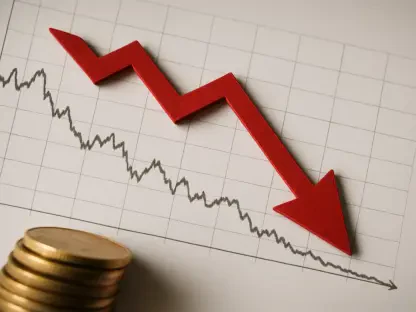The release of the US Leading Economic Index (LEI) by The Conference Board has sparked considerable discussion regarding the economic landscape of the United States. February’s report highlighted a slight decline in the LEI by 0.3%, settling at 101.1, which was instrumental in identifying upcoming economic challenges. Notable negative influences came from falling consumer expectations and new orders within the manufacturing sector. Additionally, the LEI’s 1.0% reduction over the six months ending in February illustrates an improvement when juxtaposed with a 2.1% decline in the preceding half-year period.
Divergence in Economic Indicators
The Coincident Economic Index (CEI) demonstrated a significantly positive trajectory by rising 0.3% to 114.7. Various metrics, including payroll employment, personal income less transfer payments, manufacturing and trade sales, and industrial production, all contributed to this positive movement, which serves as a primary basis for recession analysis. This robust performance translated into a notable 1.2% growth over six months, marking a decisive enhancement from the preceding half-year metrics.
Simultaneously, the Lagging Economic Index (LAG) experienced a modest increase of 0.4%, moving to 119.1. This shift indicated a slight but steady 0.2% growth over the last half-year, highlighting a response to market policies. Despite the turn from decline to growth, the increase remains subdued, signaling cautious optimism rather than a substantial boost. This divergence among various economic indicators offers a nuanced view of the US economy, emphasizing both progress and ongoing struggles.
Expert Insights and Projections
Justyna Zabinska-La Monica, Senior Manager at The Conference Board, remarked on the persistent downward trend of the LEI, albeit highlighting a less severe negative trajectory than observed since late 2023. She pointed out substantial policy uncertainties and diminished consumer sentiment as critical factors influencing this trend. Zabinska-La Monica projected a slowdown in real GDP growth, estimating it to hover around 2.0%, an insight that significantly shapes expectations for economic performance.
This mixed economic outlook underscored by Zabinska-La Monica is crucial, as it combines cautious optimism derived from improved CEI and LAG indices and evident challenges reflected in the LEI. The intersection of these indicators provides a scatter plot of economic potential and pitfalls, necessitating a balanced interpretation of data to understand the broader economic narrative.
Balancing Hope and Concern
Synthesis of the data from The Conference Board points to a complex economic reality. While the CEI and LAG illustrate positive trends, the overarching view from the LEI exposes challenges, particularly in consumer confidence and manufacturing activities. For policymakers, economists, and stakeholders, this duality offers essential insights into the current state of the US economy and its prospective path.
The LEI’s decline, albeit improved from prior months, signifies underlying economic headwinds that demand strategies to bolster consumer sentiment and manufacturing health. Conversely, the CEI and LAG provide a hopeful glance at positive movements that could be leveraged to support broader economic stability.
Future Considerations
The Conference Board’s release of the US Leading Economic Index (LEI) has generated significant discussion about the country’s economic outlook. In February, the report indicated a slight decline in the LEI by 0.3%, bringing it down to 101.1. This drop has been critical for forecasting potential economic hurdles ahead. Key factors contributing to this decline include waning consumer expectations and a drop in new manufacturing orders. Moreover, the LEI’s 1.0% reduction over the six-month period ending in February marks an improvement compared to a more substantial 2.1% decline observed in the preceding half-year. This comparative analysis suggests some areas of stabilization within the broader economic scenario. Overall, the recent LEI report has brought attention to emerging economic challenges while also indicating slight progress in certain areas. This data serves as a valuable tool for analysts and policymakers to better understand current and future economic conditions in the United States.









